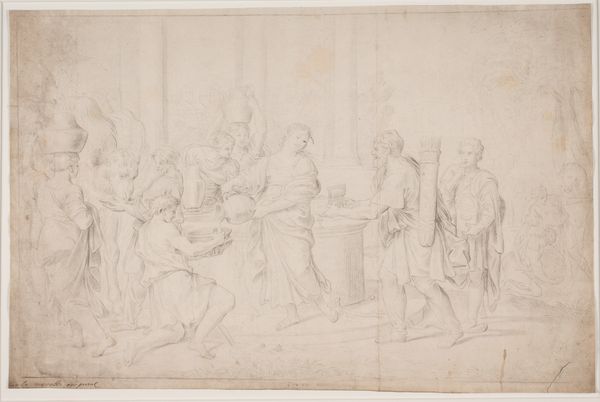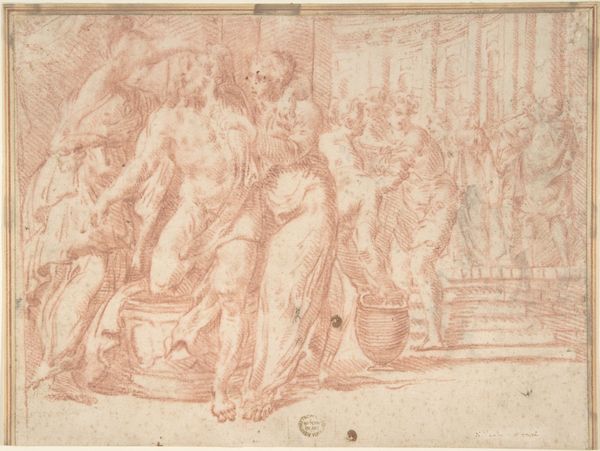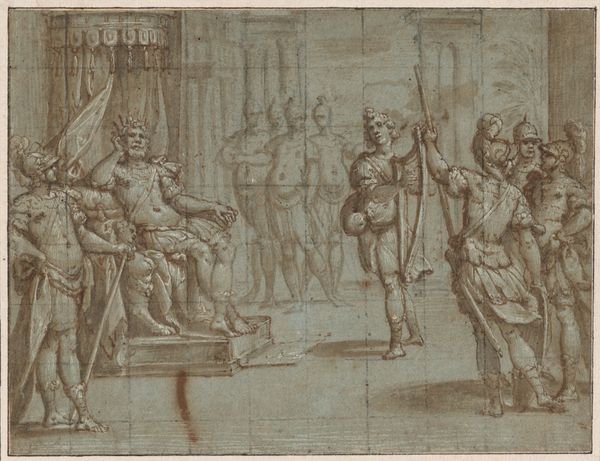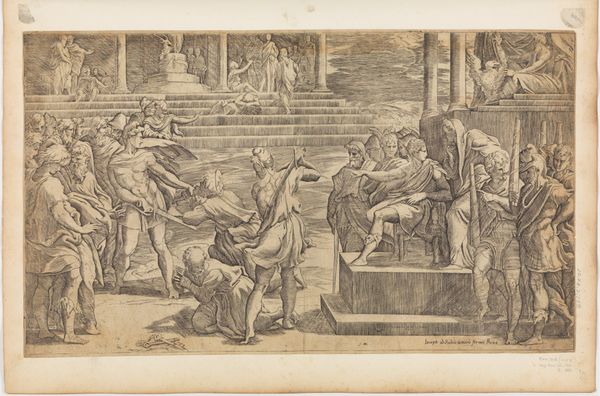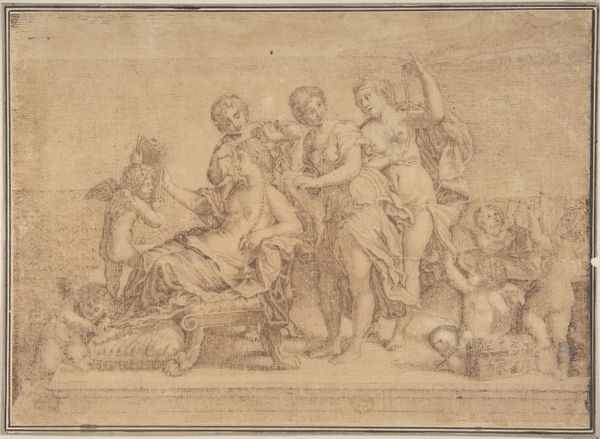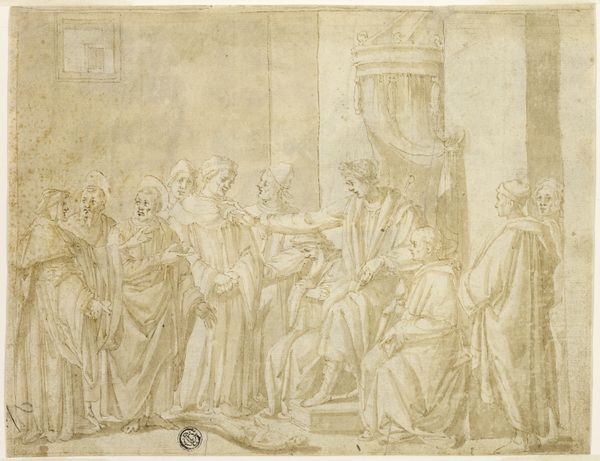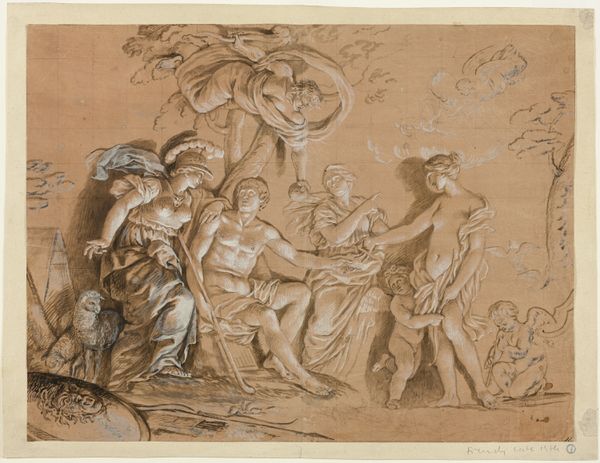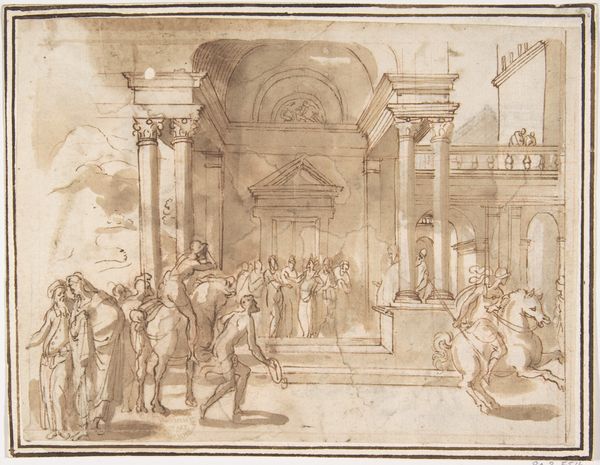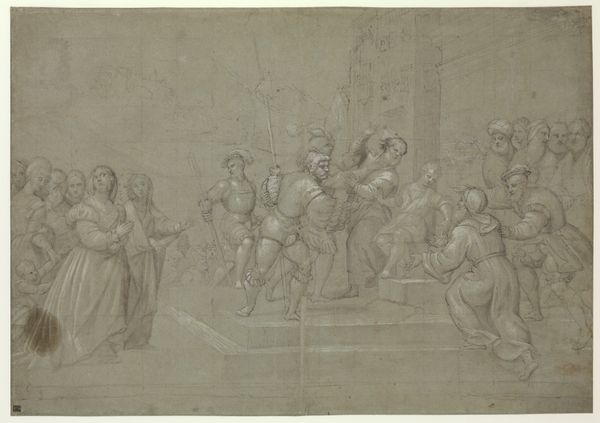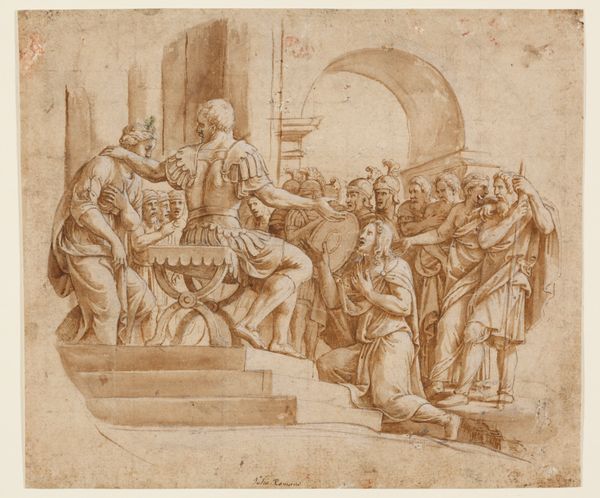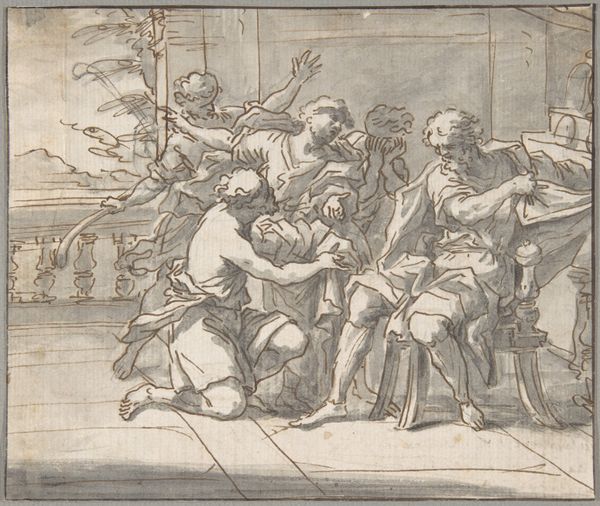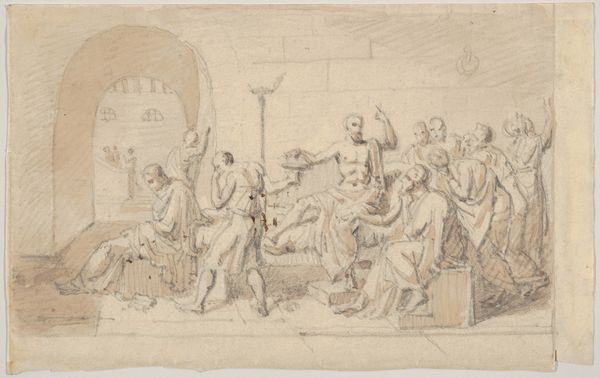
drawing, print, paper, pen
#
drawing
#
narrative-art
#
baroque
# print
#
figuration
#
paper
#
line
#
pen
#
history-painting
Dimensions: 6 1/2 x 9 3/4 in. (16.5 x 24.8 cm.)
Copyright: Public Domain
Curator: Here we have "The Nativity," a pen and brown wash drawing over graphite attributed to Louis Licherie de Beurie, created sometime between 1629 and 1687. Editor: It feels unfinished, almost ghostly. The composition, though, is undeniably dynamic, a flurry of lines creating a scene brimming with emotion. Curator: The choice to depict it as a drawing gives us insight to the development of an artwork through the ages. Consider that Licherie was working during the Baroque period, where dynamism and heightened emotion were prized. You see that expressed through line. Editor: Exactly, and note how the figures are arranged—the clear foreground focusing on the central figures, the implied depth created by the architectural elements in the background. All contained within the clean lines bordering the drawing. Even in this sketched state, you see that dramatic intent of the period clearly in view. Curator: And beyond the purely aesthetic, it’s important to consider the symbolic resonance. The Nativity, of course, is a cornerstone of Christian belief, a moment of divine intervention made manifest in the birth of Jesus. Editor: The floating angels certainly drive that home; how many are there? Five or six, seemingly emerging from the columns of an ancient ruin or building. It could represent triumph. Or divine oversight. Curator: I think the ambiguity is key here. Licherie leaves so much to our imagination—which forces us to engage actively with the scene. In doing so we also engage the cultural meaning embedded for centuries in artistic works. Editor: I'm struck by how raw it feels. The emotional intensity is so accessible; like observing the first strike of lightning—and the effect ripples beyond its edges. Curator: Perhaps that unfinished quality allows a modern audience an easier path of reflection and introspection on faith. It shows the beginning as opposed to a fully conceived plan. Editor: Agreed. There’s a vulnerability to its rawness. Like we are getting in on the origin, before the painting itself gets its "legs," or gets fully walking around in the world.
Comments
No comments
Be the first to comment and join the conversation on the ultimate creative platform.
